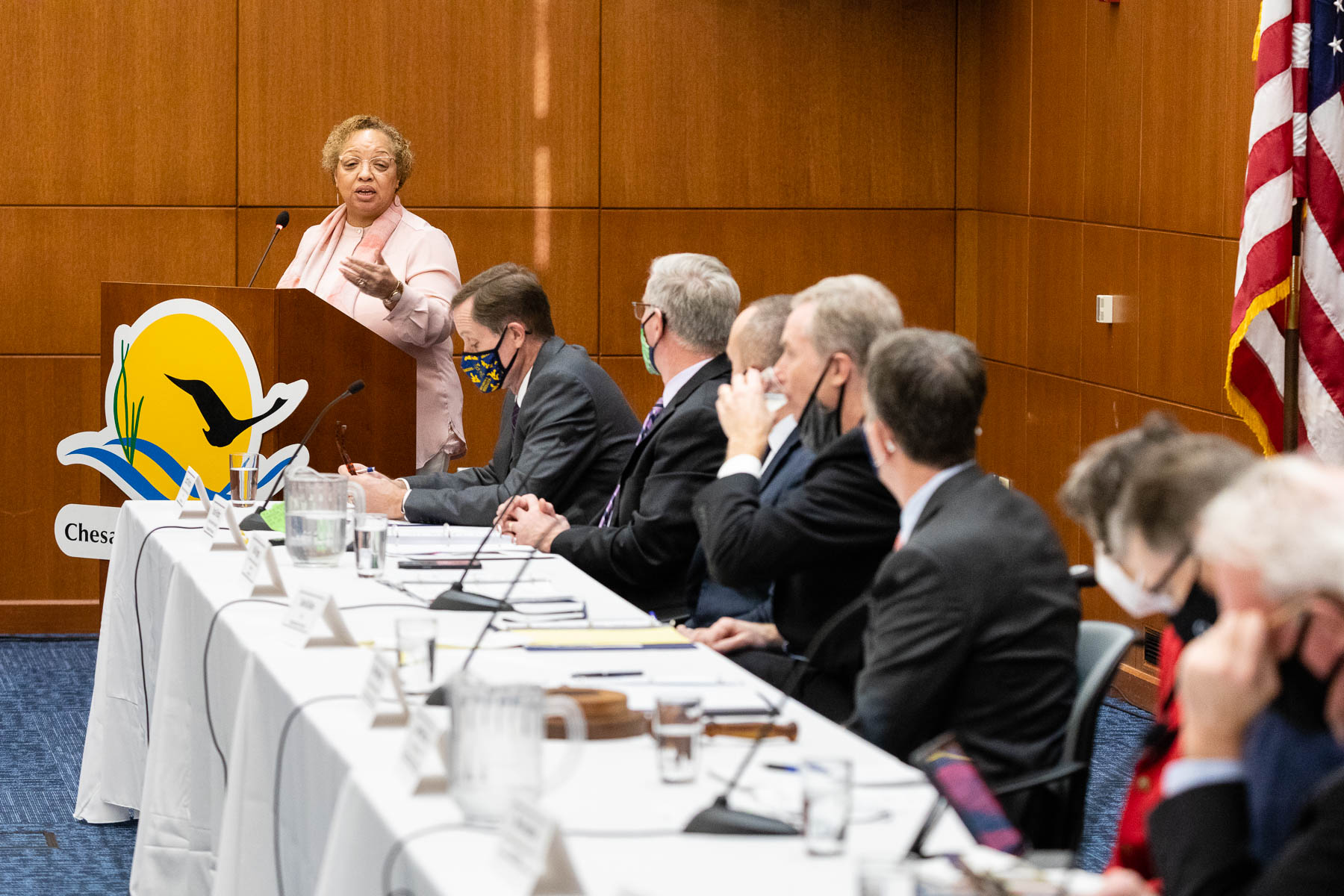Celebrating DEIJ and climate successes with the Chesapeake Bay Program
EPA Administrator takes over as chair of the Chesapeake Executive Council

On a balmy December day in Richmond, Virginia, the reins of the Chesapeake Executive Council were symbolically handed over from Virginia Governor Ralph Northam to Environmental Protection Agency (EPA) Administrator Michael Regan.
“It has been an honor to serve as the Chair of the Executive Council, a partnership that plays a vital role in building the coalition necessary to protect and restore the Chesapeake Bay,” remarked Governor Ralph Northam. “We have built a strong foundation to protect all people and the economies vital to the Bay, especially those who have been historically underrepresented and under-resourced.”
Under Governor Northam, the Chesapeake Bay Program partnership forged ahead in advancing efforts related to both diversity, equity, inclusion and justice (DEIJ) and climate change. In October 2021, the Executive Council signed a historic directive to build climate considerations into every facet of the partnership. And at the recent December meeting, members and designees heard from Vernice Miller-Travis, executive vice-president of The Metropolitan Group, who praised the actions the partnership has taken to ensure DEIJ is integrated into its work.
At their 2020 meeting, the Executive Council directed the partnership to move forward on the recommendations outlined in the Restoration from the Inside Out: A Diversity, Equity, Inclusion and Justice Strategy, which Miller-Travis helped pen. Since then, the Chesapeake Bay Program formed an action team to develop the Diversity, Equity, Inclusion and Justice Implementation Plan Strategy, which was presented as final at the December 2021 meeting. This Implementation Plan details the activities that will be taken to ensure DEIJ is integrated into all elements of the partnership, and its staff and partners reflect the diversity of the watershed they are working to restore.

Members—including Delegate David Bulova, chair of the Chesapeake Bay Commission, EPA Deputy Administrator Janet McCabe and representatives from Delaware, the District of Columbia, Maryland, New York, Pennsylvania and West Virginia—also heard from Michelle Price-Fay, acting director of the EPA Chesapeake Bay Program Office. Price-Fay presented the annual Bay Barometer: State of the Chesapeake Bay Program and the Health of the Bay, which outlined the many accomplishments of the partnership throughout the year. This year’s Bay Barometer also provided an analysis of how the Bay Program is doing in meeting the 31 outcomes of the Chesapeake Bay Watershed Agreement.
This assessment found that the partnership is on course to meet 12 outcome targets by 2025. These include blue crab abundance, environmental literacy planning, fish habitat, fish passage, forage fish, land use methods and metrics, land use options evaluation, oysters, protected lands, public access site development, sustainable schools and toxic contaminants research.
On the other hand, the assessment found 11 outcomes are off track in meeting their 2025 targets. By sharing this information with the Executive Council, the partnership hopes to prioritize funding and other needed resources to bring these outcomes back on course. They include 2025 watershed implementation plans, black duck, brook trout, climate adaption, diversity, forest buffers, submerged aquatic vegetation (SAV), toxic contaminants policy and prevention, tree canopy, water quality standards and attainment and wetlands. Real-time updates for all of these outcomes can be found on ChesapeakeProgress.
The Chesapeake Executive Council has met for the past 38 years and is responsible for guiding the policy agenda and conservation and restoration goals for the Chesapeake Bay Program. EPA takes the helm exactly 10 years after former Administrator Lisa Jackson fulfilled the role.
“EPA is honored to lead the partnership as we act together to close the gap in our restoration gaps, build resilience to climate change and ensure that the benefits of our efforts are shared by all,” said EPA Administrator Regan. “With major infusions of federal funding coming soon, and with a greater resolve, we will work with our partners to help pick up the pace of progress and realize our collective commitments to a clean Bay and watershed.”

Comments
There are no comments.
Thank you!
Your comment has been received. Before it can be published, the comment will be reviewed by our team to ensure it adheres with our rules of engagement.
Back to recent stories